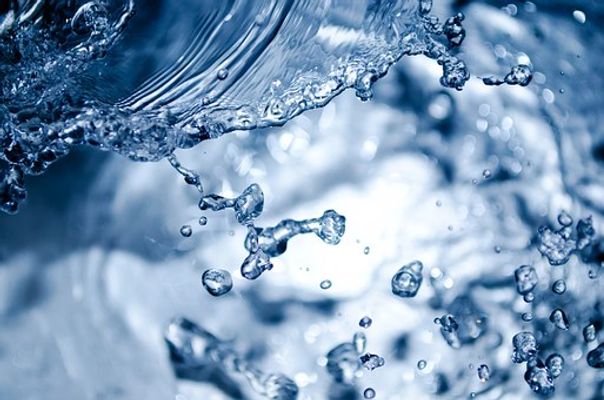7.1.2
Xylem
Structure
Structure
The xylem are plant vessels that are responsible for transporting water and mineral ions. The structure of the xylem is specialised for this role.


Vessel elements
Vessel elements
- The xylem vessels are long, tubes of cells that run up the stem of plants.
- The cells of the xylem are called vessel elements.
- The vessel elements in the xylem are dead.


End walls
End walls
- The vessel elements are stacked on top one another.
- There are no cell walls at the ends of each vessel element.
- This creates a continuous tube for water to flow through.


Lignin
Lignin
- The walls of the xylem are lined with a waterproof polymer called lignin.
- Lignin reinforces the walls of the vessel elements to provide structural support.
Cohesion-Tension Theory
Cohesion-Tension Theory
Water and inorganic ions travel up the xylem through cohesion and tension. The steps involved in this process are:


1) Transpiration
1) Transpiration
- Some of the water in the leaves is used in photosynthesis.
- Most of the water in the leaves evaporates in a process called transpiration.


2) Tension
2) Tension
- The loss of water from the leaves creates tension in the xylem.
- Tension is the formation of hydrogen bonds between water molecules and the sides of the xylem vessel elements.
- Water in the xylem is pulled upwards by this tension towards the leaves.


3) Cohesion
3) Cohesion
- Individual water molecules also form hydrogen bonds with each other. This process is called cohesion.
- When water molecules are pulled up the xylem, other molecules of water are also pulled upwards due to cohesion.
- The combination of cohesion and tension together continuously pull water upwards to replace water that has been lost in the leaves by transpiration.


4) Diffusion in the roots
4) Diffusion in the roots
- When water is pulled up the stem, the water potential at the bottom of the plant decreases.
- Water diffuses into the roots via osmosis down its water potential gradient.
- Water in the roots travels via the apoplast or symplast pathway into the xylem.
- In the apoplastic pathway, water moves through the cell walls of adjacent root cells.
- In the symplastic pathway, water moves through the cytoplasm & vacuoles of adjacent root cells via the plasmodesmata.


The Casparian strip
The Casparian strip
- Near the root xylem vessels, there is an impermeable strip in the cell walls of root cells.
- This is called the Capsarian strip.
- The Casparian strip blocks the apoplast pathway as water can't pass through the strip.
- This means water must pass through the cytoplasm to continue into the xylem.
1Cell Structure
1.1Cell Structure
1.1.1Studying Cells - Microscopes
1.1.2Introduction to Eukaryotic & Prokaryotic Cells
1.1.3Ultrastructure of Eukaryotic Cells
1.1.4Ultrastructure of Eukaryotic Cells 2
1.1.5Ultrastructure of Eukaryotic Cells 3
1.1.6Prokaryotic Cells
1.1.7Viruses
1.1.8End of Topic Test - Cell Structure
1.1.9Exam-Style Question - Microscopes
1.1.10A-A* (AO2/3) - Cell Structure
2Biological Molecules
2.1Testing for Biological Modules
2.2Carbohydrates & Lipids
2.3Proteins
3Enzymes
4Cell Membranes & Transport
4.1Biological Membranes
5The Mitotic Cell Cycle
6Nucleic Acids & Protein Synthesis
6.1Nucleic Acids
7Transport in Plants
8Transport in Mammals
8.1Circulatory System
8.2Transport of Oxygen & Carbon Dioxide
9Gas Exchange
9.1Gas Exchange System
10Infectious Diseases
10.1Infectious Diseases
10.2Antibiotics
11Immunity
12Energy & Respiration (A2 Only)
13Photosynthesis (A2 Only)
14Homeostasis (A2 Only)
14.1Homeostasis
14.2The Kidney
14.3Cell Signalling
14.4Blood Glucose Concentration
14.5Homeostasis in Plants
15Control & Coordination (A2 Only)
15.1Control & Coordination in Mammals
15.1.1Neurones
15.1.2Receptors
15.1.3Taste
15.1.4Reflexes
15.1.5Action Potentials
15.1.6Saltatory Conduction
15.1.7Synapses
15.1.8Cholinergic Synnapses
15.1.9Neuromuscular Junction
15.1.10Skeletal Muscle
15.1.11Sliding Filament Theory Contraction
15.1.12Sliding Filament Theory Contraction 2
15.1.13Menstruation
15.1.14Contraceptive Pill
15.2Control & Co-Ordination in Plants
16Inherited Change (A2 Only)
16.1Passage of Information to Offspring
16.2Genes & Phenotype
17Selection & Evolution (A2 Only)
17.2Natural & Artificial Selection
18Classification & Conservation (A2 Only)
18.1Biodiversity
18.2Classification
19Genetic Technology (A2 Only)
19.1Manipulating Genomes
19.2Genetic Technology Applied to Medicine
19.3Genetically Modified Organisms in Agriculture
Jump to other topics
1Cell Structure
1.1Cell Structure
1.1.1Studying Cells - Microscopes
1.1.2Introduction to Eukaryotic & Prokaryotic Cells
1.1.3Ultrastructure of Eukaryotic Cells
1.1.4Ultrastructure of Eukaryotic Cells 2
1.1.5Ultrastructure of Eukaryotic Cells 3
1.1.6Prokaryotic Cells
1.1.7Viruses
1.1.8End of Topic Test - Cell Structure
1.1.9Exam-Style Question - Microscopes
1.1.10A-A* (AO2/3) - Cell Structure
2Biological Molecules
2.1Testing for Biological Modules
2.2Carbohydrates & Lipids
2.3Proteins
3Enzymes
4Cell Membranes & Transport
4.1Biological Membranes
5The Mitotic Cell Cycle
6Nucleic Acids & Protein Synthesis
6.1Nucleic Acids
7Transport in Plants
8Transport in Mammals
8.1Circulatory System
8.2Transport of Oxygen & Carbon Dioxide
9Gas Exchange
9.1Gas Exchange System
10Infectious Diseases
10.1Infectious Diseases
10.2Antibiotics
11Immunity
12Energy & Respiration (A2 Only)
13Photosynthesis (A2 Only)
14Homeostasis (A2 Only)
14.1Homeostasis
14.2The Kidney
14.3Cell Signalling
14.4Blood Glucose Concentration
14.5Homeostasis in Plants
15Control & Coordination (A2 Only)
15.1Control & Coordination in Mammals
15.1.1Neurones
15.1.2Receptors
15.1.3Taste
15.1.4Reflexes
15.1.5Action Potentials
15.1.6Saltatory Conduction
15.1.7Synapses
15.1.8Cholinergic Synnapses
15.1.9Neuromuscular Junction
15.1.10Skeletal Muscle
15.1.11Sliding Filament Theory Contraction
15.1.12Sliding Filament Theory Contraction 2
15.1.13Menstruation
15.1.14Contraceptive Pill
15.2Control & Co-Ordination in Plants
16Inherited Change (A2 Only)
16.1Passage of Information to Offspring
16.2Genes & Phenotype
17Selection & Evolution (A2 Only)
17.2Natural & Artificial Selection
18Classification & Conservation (A2 Only)
18.1Biodiversity
18.2Classification
19Genetic Technology (A2 Only)
19.1Manipulating Genomes
19.2Genetic Technology Applied to Medicine
19.3Genetically Modified Organisms in Agriculture
Unlock your full potential with Seneca Premium
Unlimited access to 10,000+ open-ended exam questions
Mini-mock exams based on your study history
Unlock 800+ premium courses & e-books